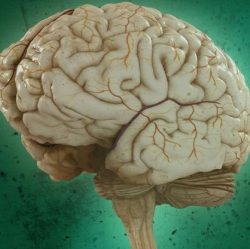
Rock your baby in sync with music and you may wonder how the experience affects her and her developing brain. A new study by scientists at the University of Washington I-LABS shows that a series of play sessions with music improved 9-month-old babies’ brain processing of both music and new speech sounds.
“Our study is the first in young babies to suggest that experiencing a rhythmic pattern in music can also improve the ability to detect and make predictions about rhythmic patterns in speech,” said lead author Christina Zhao, a postdoctoral researcher at I-LABS.
“This means that early, engaging musical experiences can have a more global effect on cognitive skills,” Zhao said.
“Infants experience a complex world in which sounds, lights and sensations vary constantly,” said co-author Patricia Kuhl, co-director of I-LABS. “The baby’s job is to recognize the patterns of activity and predict what’s going to happen next. Pattern perception is an important cognitive skill, and improving that ability early may have long-lasting effects on learning.”
Like music, language has strong rhythmic patterns. The timing of syllables helps listeners define one speech sound from another and understand what someone is saying. And it’s the ability to identify differences in speech sounds that helps babies to learn to speak.
The I-LABS researchers designed a randomized-controlled experiment to see if teaching babies a musical rhythm would help the babies with speech rhythms.
Over the course of a month, 39 babies attended 12 15-minute play sessions in the lab with their parents. In groups of about two or three, the babies sat with their parents, who guided them through the activities.
In the 20 babies assigned to the music group, recordings of children’s music played while an experimenter led the babies and their parents through tapping out the beats in time with the music.
The 19 babies in the control group attended play sessions that did not involve music. Instead, they played with toy cars, blocks and other objects that required coordinated movements without music.
“In both the music and control groups, we gave babies experiences that were social, required their active involvement and included body movements, these are all characteristics that we know help people learn,” Zhao said. “The key difference between the play groups was whether the babies were moving to learn a musical rhythm.”
Within a week after the play sessions ended, the families came back to the lab so the babies’ brain responses could be measured. The researchers used magnetoencephalography (MEG) to see the precise location and timing of brain activity.
While sitting in the brain scanner, the babies listened to a series of music and speech sounds, each played out in a rhythm that was occasionally disrupted. The babies’ brains would show a particular response to indicate they could detect the disruption.
The researchers focused their analyses on two brain regions, the auditory cortex and the prefrontal cortex, which is important for cognitive skills such as controlling attention and detecting patterns.
Babies in the music group had stronger brain responses to the disruption in both music and speech rhythm in both the auditory and the prefrontal cortex, compared with babies in the control group.
This suggests that participation in the play sessions with music improved the infants’ ability to detect patterns in sounds.
